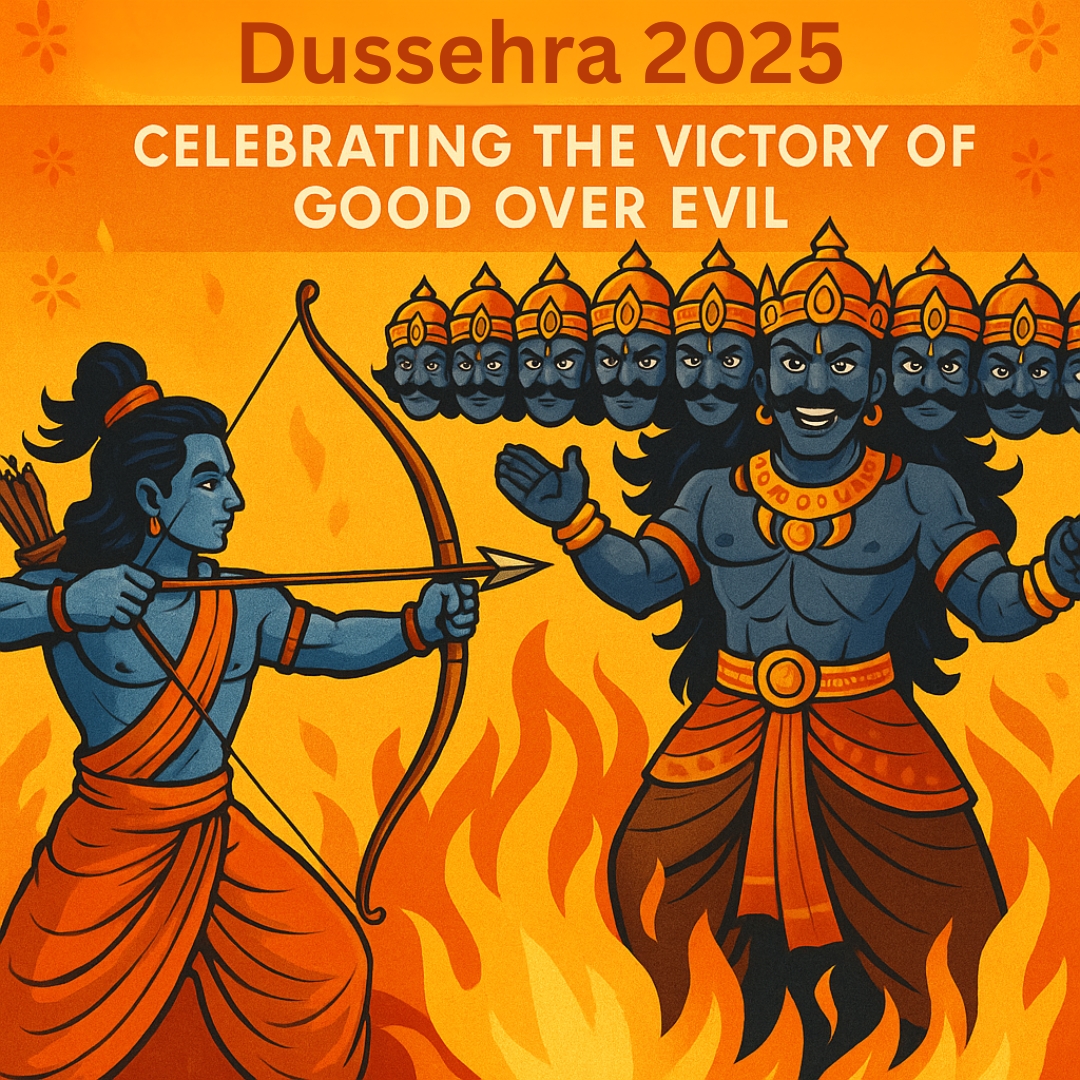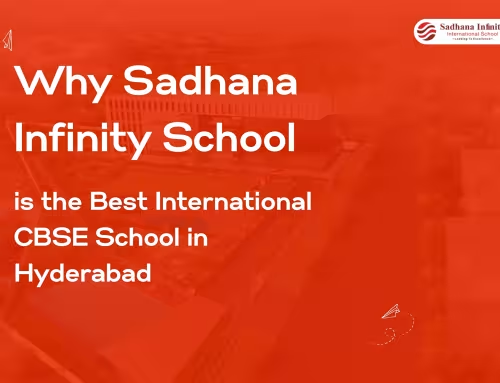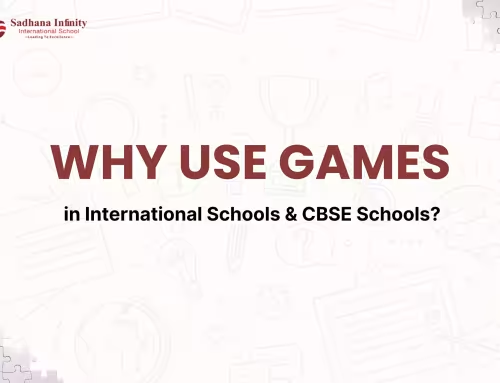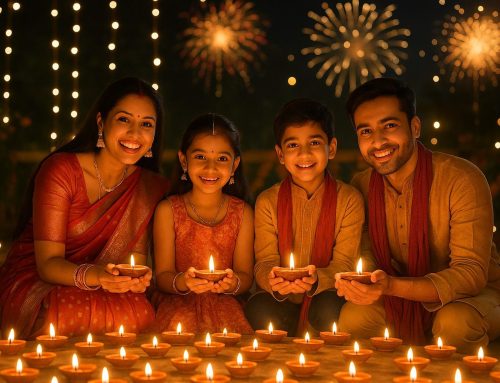Introduction
Every year, one festival reminds us that goodness, truth, and courage always have a chance to win. That festival is Dussehra, also known as Vijayadashami. In 2025, Dussehra will be celebrated on 2 October in India.
At Sadhana Infinity School, we believe festivals are more than just holidays. They are moments to reflect on values, traditions, and to bring together students, teachers, and parents in joyful learning. Let us explore what Dussehra means, how it is celebrated, and how we can make it meaningful, especially in school settings.
When is Dussehra 2025?
- According to the Hindu calendar, Dussehra falls on the tenth day (Dashami) of the bright half (Shukla Paksha) of the lunar month of Ashwin.
- In 2025, Dussehra (Vijayadashami) is officially on Thursday, 2 October.
- Some rituals begin earlier (in many parts of India, Navratri ends on the day before), and puja times can vary by city.
History and Mythological Stories
Dussehra has rich myths and legends behind it. They teach powerful lessons.
1. The story of Lord Rama and Ravana
According to the epic Ramayana, Ravana, the demon king of Lanka, kidnapped Sita, the wife of Lord Rama. Rama, with loyalty, bravery, and help from his brother Lakshmana, the monkey‐god Hanuman, and others, fought a long battle, defeated Ravana, and rescued Sita. People see this story as an example of good (dharma) defeating evil.
2. The legend of Goddess Durga and Mahishasura
In many parts of India (especially in the East), Dussehra is also connected with Durga Puja. Goddess Durga fought and defeated the demon Mahishasura after nine days of battle. Her victory on the tenth day is celebrated as Vijaya Dashami. This story highlights courage, sacrifice, and the power of the divine feminine.
These two legends are often celebrated in different ways in different regions, but the core message is similar: good over evil, light over darkness, truth over falsehood.
Significance and Lessons of Dussehra
Dussehra is more than rituals; it carries values that are still relevant today. Here are some lessons we can learn:
- Moral values: Honesty, truth, courage, righteousness. Rama’s refusal to give up values despite hardship, Durga’s strength and compassion.
- Self‐reflection: We all have ‘inner Ravana’ qualities like ego, greed, and anger. Dussehra urges us to overcome them.
- Community and unity: The festival brings people together. Neighbors, friends, and families join in rituals, fairs, and Ramlila performances.
- Respect for culture: Learning about regional differences teaches respect and diversity. India has many ways of celebrating, yet all point to similar ideals.
- Hope and renewal: Dussehra reminds us that even when evil seems strong, it can be overcome. It gives hope.
How Dussehra is Celebrated Across India
India is big, and so are the ways people observe Dussehra. Here are some common as well as region‐specific practices:
| Region / Place | Key Practices |
|---|---|
| North India | Big Ramlila performances (dramatic enactments of Ramayana), burning of huge effigies of Ravana (and of his brother Kumbhakarna and son Meghnad) in the evening, fairs, fireworks. |
| East (West Bengal, Odisha, Assam, etc.) | Durga Puja ends on Vijaya Dashami; immersion of Durga idols; worship of the goddess; cultural processions; art, music, dance. |
| South India | Ayudha Puja (worshipping tools, instruments, vehicles), especially in Karnataka, Tamil Nadu, etc., people clean their homes and instruments; seek blessings for work and learning. |
| Other cultural variations | Exchange of symbolic leaves (Shami tree), special foods, processions, decorating community spaces, storytelling of Ramayana, and episodes from the Puranas. |
People also observe fasts, visit temples, offer prayers, feast together, give gifts, and wear new clothes.
Dussehra 2025: Rituals & Auspicious Times
If you’re planning with students and families, these are useful to know:
- The Dashami Tithi (day for the main puja) in 2025 begins on the evening of 1 October and continues into 2 October through part of the day.
- The Aparahna Puja time (a time in the afternoon) is considered auspicious in many places.
- Since traditions and muhurats (auspicious timings) can differ by city and temple, it is good to consult a local panchang or priest.
Celebrations at Sadhana Infinity School
At Sadhana Infinity School, we aim to combine learning, culture, and fun in our Dussehra celebrations. Here are ideas and practices that could be part of our school event in 2025:
1. Storytelling and Ramayana Performance
Students can act out parts of the Ramayana and Durga mythology. This helps them understand the stories and internalize values like truth, bravery, and sacrifice.
2. Classroom Discussions & Reflection
Teachers can guide discussions: What does “good over evil” mean for me? What are my inner Ravanas? How can I overcome them? This builds moral reasoning.
3. Art & Craft Activities
- Making paper or eco-friendly effigies of Ravana.
- Drawing scenes from the Ramayana or creating banners and posters, meaning good over evil.
- Decorating Shami leaves or symbols.
4. Eco-Friendly Celebrations
Encourage minimal use of plastics and loud firecrackers. Perhaps make small effigies rather than huge ones, with biodegradable materials.
5. Cultural Programs
Dance, drama, and music performances. Invite parents to participate.
6. Community & Sharing
Students can share sweets and traditional foods. Maybe organise a small fair or stalls with traditional snacks.
7. Value Awards or Recognition
A small ceremony to honor students who have shown kindness, honesty, and courage, values that align with the message of Dussehra.
Why Dussehra Holds Relevance Today
Though these stories are ancient, their meaning is timeless. In 2025, and in the coming years, Dussehra teaches us:
- To resist negativity, injustice, and wrongdoing in daily life, whether it is bullying, dishonesty, or intolerance.
- To promote respect among all people, regardless of differences in region, religion, or language.
- To balance modern life with traditions, use technology for storytelling, but retain human values.
- To foster environmental awareness by holding festival celebrations in an eco-friendly way.
For youngsters especially, Dussehra can be a moment to grow not just academically, but morally and socially.
How Families Can Celebrate at Home
To make Dussehra special at home:
- Clean and decorate the home and puja space.
- Tell the stories of Rama, Sita, Hanuman, and Durga. Maybe read from storybooks or watch child-friendly video adaptations.
- Make small effigies or symbols together and decide how to symbolically “burn” or remove negativity (without necessarily burning something harmful).
- Light lamps, share sweets with neighbors, and help someone in need.
- Teach children that festivals are about values more than gifts or spectacle.
Conclusion
Dussehra 2025 is not just a day off. It is a chance to remember that light overcomes darkness, truth defeats falsehood, and goodness wins even when evil seems strong. At Sadhana Infinity School, we view festivals like Dussehra as opportunities to teach, to bond, to grow in character.
As we approach 2 October 2025, let us prepare to celebrate with hearts full of courage, kindness, and integrity. Let every student, teacher, and family find a way to make the message of Dussehra part of daily life not only on the outside, but within.
Wishing everyone a joyful, meaningful, and inspiring Dussehra 2025 from everyone at Sadhana Infinity School!
FAQs (Frequently Asked Questions)
Here are some questions students or parents often ask, with simple answers:
Q1: Why does the date of Dussehra change every year?
A: Because Dussehra follows the Hindu lunisolar calendar. It depends on the moon phase (the bright half of the Ashwin month). So dates vary in the Gregorian (solar) calendar.
Q2: What is Navratri? How is it related to Dussehra?
A: Navratri means “nine nights.” It is devoted to the worship of Goddess Durga in her different forms. The tenth day after those nine nights is Dussehra or Vijayadashami. It marks the end of Navratri.
Q3: What is Ramlila?
A: Ramlila is a dramatic play or performance showing parts of the Ramayana story. It’s popular in North India. Actors perform on stages in public spaces leading up to Dussehra, culminating in burning the effigies of Ravana.
Q4: What does Vijayadashami mean?
A: The word “Vijaya” means victory, and “Dashami” means tenth day. So Vijayadashami means “victory on the tenth day.”
Q5: Are there special foods made?
A: Yes. Traditional sweets, snacks, and special meals vary by region. Families prepare foods they like. Sharing food is part of the celebration.






